NHBP Tribal Elder Crafts Walking Stick on Display at FKCH
Written by: Leslie McLove | Photos by NHBP Tribal Member and Photographer Johnathon Moulds
“It all comes back to connections,” said NHBP Tribal Elder Chuck Drake, 74, of Martinez, California. “What I enjoy about making walking sticks is that, in the beginning, this really gave me something to connect back to my Native roots.”
Proudly displayed on the top shelf of a glass showcase at the main entrance of the FireKeepers Casino Hotel (FKCH) in Battle Creek, Michigan, is a handcrafted walking stick that traveled over 2,000 miles, eagerly awaiting its time to shine. Displayed among other mementos that symbolize the culture and traditions of the Nottawaseppi Huron Band of the Potawatomi (NHBP) peoples, this walking stick has a story that connects the past, present and future.
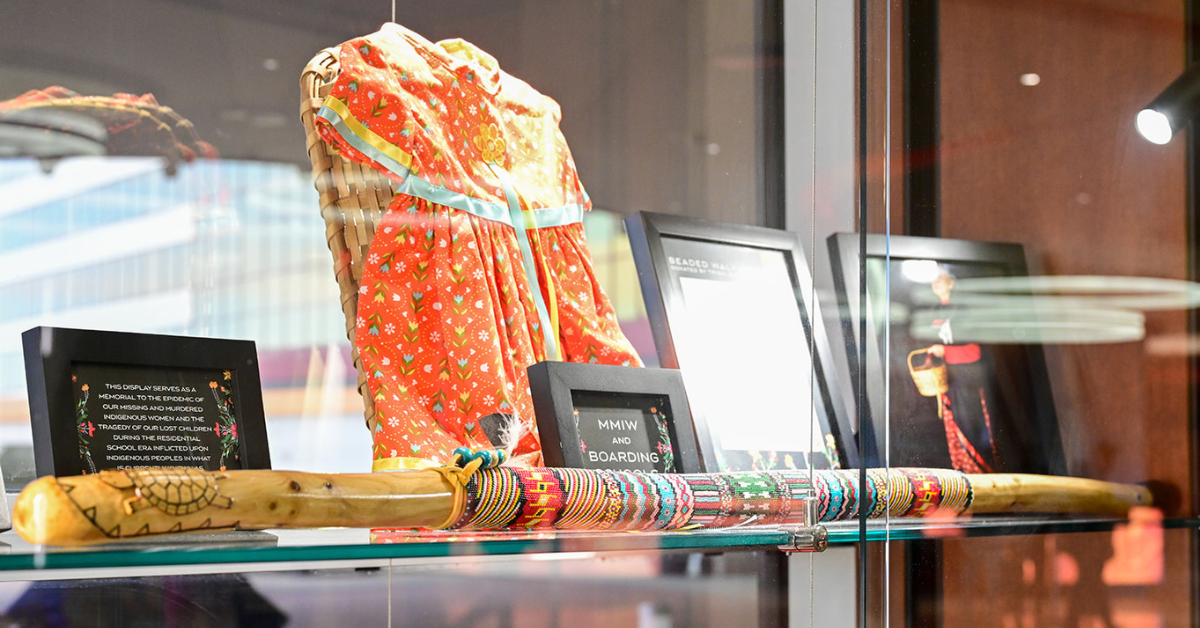
As the craftsman of the walking stick, Drake is a lifelong resident of Northern California who learned of his Native American heritage through his mother. Drake’s journey to reconnect with his roots began as a young boy. Growing up, Drake’s Great Aunt (Marie Medawis), who resided in Plainwell, Michigan, was his first connection to his Native American heritage; she was the one who “planted the seed” for him to pursue his interest in learning as much as he could about his lineage.
Living in California, learning about one’s lineage can be difficult, especially when he was younger, when the primary source of information was delivered via mail, before the internet.
Drake became an enrolled Member of NHBP when he was nearly 60 years old, after the passing of his mother in 1999 led to the discovery of his family’s connection back to NHBP through the Taggart Roll, where his grandmother (Anna Medawis Tufts) was listed. After becoming an enrolled Member, Drake says his source of connection to NHBP was the Turtle Press.
“When those arrived via snail mail, I read them front to back and used them to get to know and learn about the NHBP Community.”
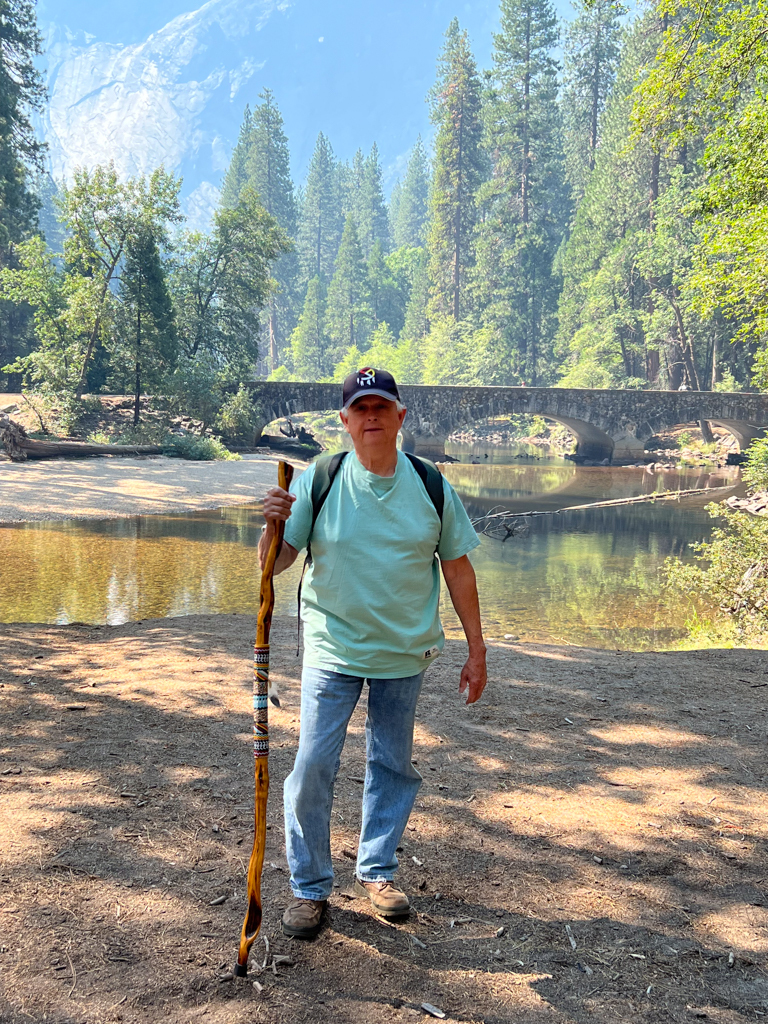
These days, Drake remains connected to NHBP digitally by participating in as many virtual programs and events as possible. He appreciates these learning opportunities and connecting with the Bodéwadmi Culture and fellow Tribal Members.
“Everything from the Virtual Language Workshops and Culture Nights to the Tribal Council Meetings and the Elders Committee Meetings — anything available via Zoom, I try to attend,” said Drake. “If I lived closer, I would be involved in as many activities as possible. I honestly never take my membership for granted; I am proud to be a small part of NHBP.”
Self-taught Walking Stick Craftsman
According to the Art Walking Sticks website,
“Walking sticks hold profound significance in the Indigenous cultures of the Americas, representing spiritual connections, healing, storytelling, and the preservation of cultural heritage. They serve as more than just physical aids; they embody the traditions, beliefs, and values of Native American communities.
“Walking sticks offer a glimpse into the lives of past generations, showcasing their ingenuity, adaptability, and deep-rooted connection with the natural world. They are symbols of human creativity and resourcefulness, shaped by the diverse environments and societal needs of their respective cultures. By studying and appreciating traditional walking sticks, we gain insights into the values, beliefs, and practices of different communities around the globe.”
Drake is a self-taught walking stick craftsman who picked up the craft in 2005 after first learning Peyote Stitch.
The inspiration behind this craft came from a friend of Drake’s, an Apache Tribal Member. During a visit, Drake’s friend showed him a sacred bird Feather that he had received during a trip to the Reservation where his family resides. Upon admiring the beauty of this Feather, Drake couldn’t help but notice the amazing beadwork incorporated into the Feather.
Impressed by what he had seen, Drake asked his friend to explain the type of beading on the Feather, to which his friend informed him that it was a Peyote Stitch. This encounter sparked an interest in Drake, who also wanted to learn beadwork. Drake thought it was beautiful to see that a beaded pattern could be placed onto something as special as a Feather, a symbolic connection to his Native roots and culture.
Drake didn’t have a connection to anyone who could teach him the fundamentals of beading, so he set out to learn the method independently. The first learning material he purchased was a VHS cassette tape on “How to Peyote Stitch.”
Through re-watching this tape, Drake eventually learned how to Peyote Stitch, but only after “making a lot of mistakes along the way.”
Then, one day in 2005, as Drake was playing around with a Peyote Stitch design he was working on for a key fob, he thought to himself, “Well, if I can make a beaded pattern for a key fob that is circular, why couldn’t I adopt a similar design to a walking stick, which also has a circular shape? I’d just have to increase the number of beads in my pattern.”
A New Passion is Formed
Prior to retirement, Drake spent time working as a welder and steel fabricator, so working with the natural elements that are used to craft a walking stick was relaxing for him and, at the same time, allowed him to connect in a new way to the beauty and nature that surrounded him throughout the process of walking stick creation.
After many trials and errors, Drake’s first walking stick was created and decorated using a simple four-color bead pattern.
Drake does not cut down any “green” wood; he sources different types of wood for his creations from deadfall, which he has hand-selected off of his own property, or from one of the many forests scattered along Northern California while out hiking.
When Drake first started creating walking sticks, he did it because he loved doing it. It started out as a kind gesture but has grown into so much more.
“What I enjoy about crafting walking sticks is that, in the beginning, this really gave me something to connect back to my Native roots. The entire creation process is very grounding.”
Chuck Drake
“When I started creating the walking sticks, it was just for friends and family. But soon, I had a collection of walking sticks built up, so I decided to try to sell some. I connected with Tribal Members from the two different Miwok tribes out of the Sierra Nevada Mountains, and they invited me to sell my sticks at their annual Big Time Festival.”
Drake’s walking sticks are functional works of art that reflect his passion, intention, and prayer. A standard six-inch beadwork pattern can take Drake between 15 and 20 hours and usually takes five to six thousand beads to complete a design.
Drake prefers to be of clear mind and body when working on the sticks; this allows him to carry forth a positive energy during the creation process. Each of Drake’s walking sticks is handmade and unique, created with the end user in mind.
The design of the walking stick is not something Drake usually plans out ahead of time; instead, he prefers to allow the design to come to him as he is crafting the stick. As he prepares the stick, he focuses on blessing the person to whom the walking stick will be given.
“When I am working on the sticks, I am creating with intention and prayer,” said Drake.
“What I really like to do is create walking sticks for people I know. Those who have told me what bead colors they prefer, their wood preference, and their height, I then develop a design for that person.”
“It’s therapeutic for me to create these walking sticks.”
It’s not just about the physical act of making something; through these walking sticks, Drake connects to his roots, the natural world, and the people who will eventually use them on their own journeys.
Walking Stick Donated to NHBP
The walking stick on display at FKCH is made from a Liquid Amber tree. It includes a 24-inch beadwork pattern that incorporates the colors of the Medicine Wheel and the branding colors for NHBP.
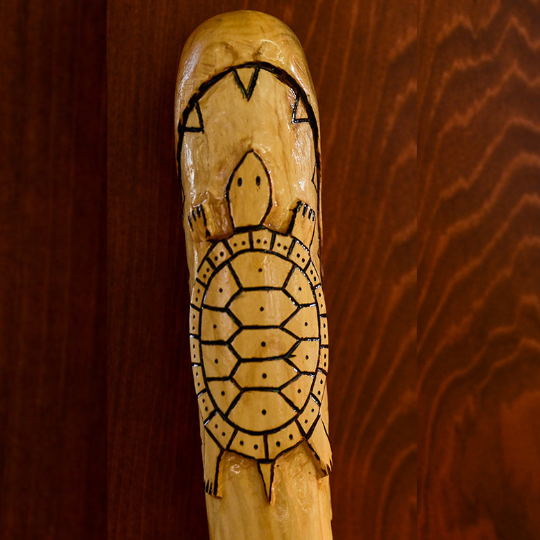
At the end is a hand-carved turtle, which Drake created using a dermal tool and an image of the Mshiké {turtle} from the NHBP seal. The Mshiké was only his second attempt at carving anything into wood.
“It wasn’t until after I had carved the turtle into the end of that stick and took a step back that I realized who I was creating this walking stick for. I knew at that moment that this walking stick would be donated to the Tribe and would soon be headed to Michigan upon completion,” said Drake.
This specific walking stick was a unique piece that Drake worked on over time. It took him close to two years to complete and has one of the most extended bead patterns of any other stick he’s created.
“After creating the walking stick, I gifted it to the Tribe.”
At that time, Drake didn’t know its final destination.
“I sent the walking stick out in a package addressed to NHBP Tribal Member Robyn Burlingham and left it in her hands to find a good place to display it.”
“I have been so blessed by being an NHBP Elder that it is very easy for me to give back any time I can,” said Drake.
Full Circle Moment
To Drake’s surprise, when he came to the Potawatomi Gathering of Nations hosted by NHBP in the summer of 2023, he saw his walking stick displayed in the showcase at the FKCH entrance.
“I was blown away when I first saw it,” said Drake. “Seeing the walking stick I spent all that time creating displayed in such an important place was icing on the cake. It truly was a great moment for me!”
Not only has this passion been a way for Drake to preserve and celebrate his Indigenous culture and traditions, but it has also been a testament to his journey of discovery and is an excellent reminder to all about how essential the power of personal and cultural connection is.
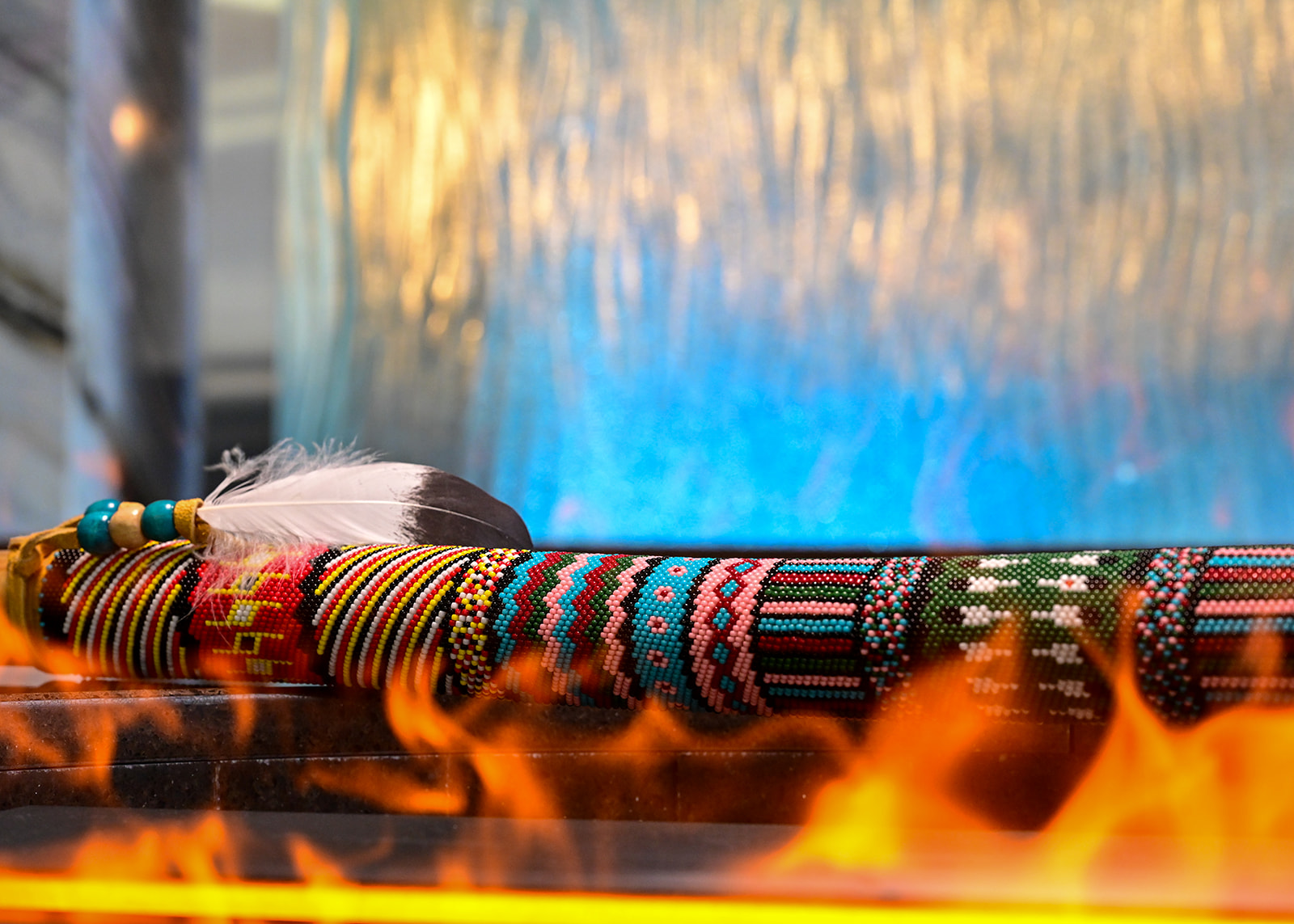
“This is something that I love to do and am passionate about. At first, when I started creating these, I thought of it as more just a utilitarian craft, something I could do to dress up and make the sticks look fancy. But now I’m starting to see that these truly are a work of art.”
It All Comes Back to Connections
In a world where many people feel disconnected from their roots and struggle to find a sense of belonging, Drake’s story offers hope and inspiration. As he continues to create walking sticks that reflect his connection to his indigenous heritage, he hopes to inspire others to connect with their roots, express their creativity, and share their stories.
“It all comes back to connections,” Drake says.
And indeed, his walking sticks are a powerful reminder of the importance of connection in our lives. It reminds us to stay true to our path, even in times of uncertainty or adversity, and to have the courage to face our fears, take risks and embrace change.
To see additional imaages of the walking stick created by Drake, click HERE.
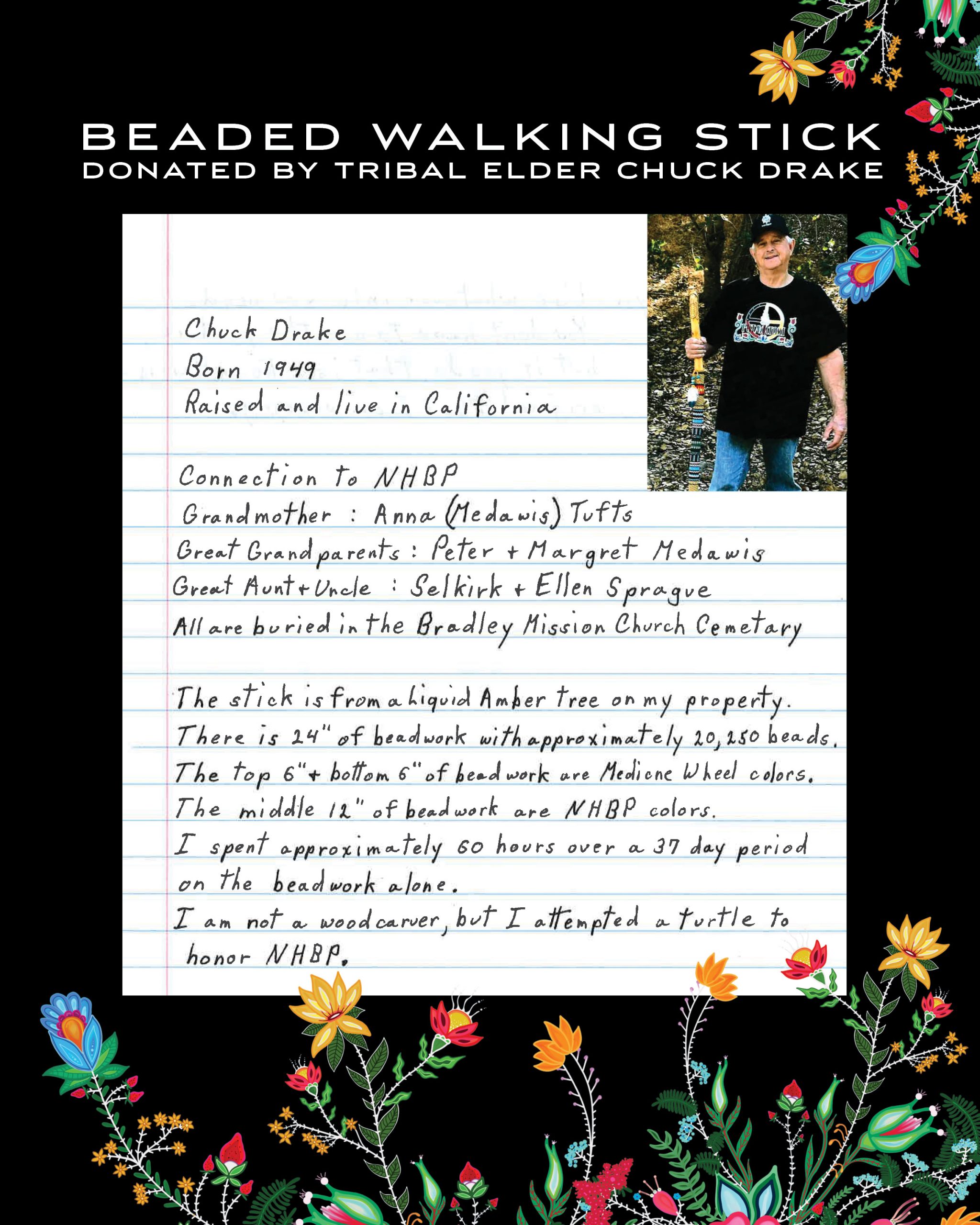

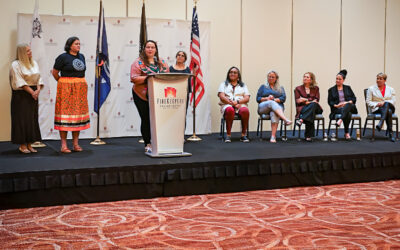

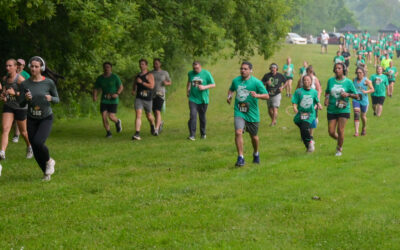
0 Comments